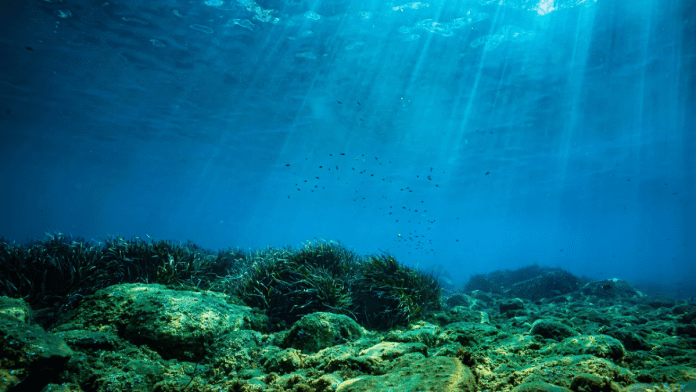🕒 Last updated on August 14, 2025
Our planet is covered mostly by water, yet much of the ocean floor remains a mystery. Deep below the waves lies a vast seafloor, home to strange and beautiful ecosystems.
The hidden carbon vault beneath the ocean
There are coral reefs that have grown for thousands of years in complete darkness. There are hydrothermal vents, where life survives in extreme heat and pressure. But the seafloor does more than host unusual creatures—it plays a silent but crucial role in regulating our climate.
Compared to the atmosphere, the ocean contains roughly 50 times as much carbon. A large share of this is stored in the seafloor. In fact, the top meter of seafloor sediment can hold as much carbon as three meters of soil on land. This makes it one of the planet’s most important natural carbon vaults.
Most of this carbon starts its journey in the upper, sunlit layers of the ocean. Tiny organisms called phytoplankton, which include microscopic algae and bacteria, use sunlight to absorb carbon dioxide and turn it into organic matter. Some of this matter sinks to the bottom, where it becomes buried in sediments. A smaller amount of carbon comes from rivers, groundwater, and dust from the land.
Only a tiny fraction—less than 1%—of the carbon captured by phytoplankton ever reaches the seabed. But once it does, it can stay locked away for millions of years if undisturbed. This long-term storage helps keep excess carbon dioxide out of the atmosphere, slowing down global warming.
How human activities threaten seafloor carbon
The deep sea might seem far away and untouchable, but human activities are now reaching even its most remote corners. Dredging and trawling, two forms of bottom fishing, pose the greatest harm. In these, cages, chains, and heavy nets are dragged down the seafloor. In the process, they churn up sediments and disturb the carbon stored there.
When the seafloor is disturbed, the buried carbon can be released back into the water. Microbes then break down this carbon, producing carbon dioxide. Some of this gas eventually escapes into the atmosphere, adding to greenhouse gas levels.
Studies suggest that bottom trawling alone could release between 0.03 and 0.37 gigatons of carbon dioxide each year. That is a massive range, and scientists are still working to understand the exact numbers. Other activities—like deep-sea mining, laying undersea cables, and building offshore infrastructure—can also stir up sediments and reduce carbon storage.
Mining is especially concerning because it directly removes parts of the seabed that have taken thousands or even millions of years to form. Research shows that mined areas can have nearly 50% less stored carbon than nearby untouched areas. And the damage does not stay in one place—waste and sediments stirred up by mining can spread to other parts of the ocean, harming marine life along the way.
Protecting the seafloor to protect the climate
One way to reduce damage to the seafloor is through Marine Protected Areas (MPAs). These are areas of the ocean that have been preserved for the long run. Around 8% of the world’s ocean is currently within an MPA. In theory, these areas can help protect seafloor carbon by limiting harmful activities like bottom trawling.
🚀 No doctor in space? Meet Google’s AI Assistant set to become NASA’s ultimate lifeline
However, the reality is more complicated. Many MPAs are not actively managed, and destructive fishing is still allowed in large parts of them. Less than 3% of the ocean is “highly protected,” meaning that activities that damage the seabed are banned. In some places, trawling rates are actually higher inside MPAs than outside them.
When well-funded and properly enforced, MPAs can benefit both marine life and carbon storage. They can also bring economic value—some studies estimate that protecting 20–30% of the ocean could provide trillions of dollars in ecosystem services each year. But without strong rules and enforcement, MPAs may do little to safeguard seafloor carbon.
Protecting the deep sea has benefits beyond climate. Many bottom-dwelling creatures take years to recover after trawling. Bottom fishing also has a large carbon footprint compared to other foods like poultry or pork, and much of the catch is thrown back dead or dying. Mining, meanwhile, can destroy rare deep-sea habitats forever, along with the species that depend on them.
The seafloor is more than just mud and sand—it is a living, breathing part of Earth’s climate system. Disturbing it risks unleashing stored carbon that has been safely buried for millennia, adding yet another source of greenhouse gases to our already warming world.

